Рич Карлгаард - Поздний расцвет [Как взрослым добиться успеха в мире, одержимом ранним развитием] [litres]
- Название:Поздний расцвет [Как взрослым добиться успеха в мире, одержимом ранним развитием] [litres]
- Автор:
- Жанр:
- Издательство:Литагент 5 редакция «БОМБОРА»
- Год:2020
- Город:Москва
- ISBN:978-5-04-102266-2
- Рейтинг:
- Избранное:Добавить в избранное
-
Отзывы:
-
Ваша оценка:
Рич Карлгаард - Поздний расцвет [Как взрослым добиться успеха в мире, одержимом ранним развитием] [litres] краткое содержание
Поздний расцвет [Как взрослым добиться успеха в мире, одержимом ранним развитием] [litres] - читать онлайн бесплатно ознакомительный отрывок
Интервал:
Закладка:
6. «Бауэрман начал агитировать…» – там же.
7… о женщине, которая добилась партнерства … – William Burnett and David John Evans, Designing Your Life: How to Build a Well-Lived, Joyful Life (New York: Knopf, 2016).
8. Иногда отступление – лучшее, что можно сделать … – Carsten Wrosch et al., “Giving Up on Unattainable Goals: Benefits for Health?” Personality and Social Psychology Bulletin 33, no. 2 (2007): 251–65.
9… выдающийся руководитель компании «Intel» Эндрю Гроув … – чтобы узнать, как руководители «Intel» решили отказаться от изначального продукта – интегральных схем, см. Andrew Grove, Only the Paranoid Survive (New York: Doubleday, 1996).
10. «Знаете, я спросил Гордона [Мура], что будет…» – Laura Sydell, “Digital Pioneer Andrew Grove Led Intel’s Shift From Chips to Microprocessors,” NPR, March 22, 2016, https://n.pr/2MvQCAm.
11. Невозвратные затраты – деньги, время … – Hal R. Arkes and Catherine Blumer, “The Psychology of Sunk Cost,” in Judgment and Decision Making: An Interdisciplinary Reader, ed. Terry Connolly, Hal R. Arkes, and Kenneth R. Hammond, 2nd ed. (New York: Cambridge University Press, 2000).
12. Ошибка невозвратных затрат … – Daniel Friedman et al., “Searching for the Sunk Cost Fallacy,” Experimental Economics 10, no. 1 (2007): 79–104.
13. В будущем мы оцениваем стоимость выбора … – John W. Payne, James R. Bettman, and Mary Frances Luce, “When Time Is Money: Decision Behavior Under Opportunity-Cost Time Pressure,” Organizational Behavior and Human Decision Processes 66, no. 2 (1996): 131–52; Robert Kurzban et al., “An Opportunity Cost Model of Subjective Effort and Task Performance,” Behavioral and Brain Sciences 36, no. 6 (2013): 661–79.
14. Нравится вам такое сравнение? – а для поздних цветов еще и полезно знать, что взрослые люди реже совершают ошибку невозвратных затрат, чем молодые: “Older adults were less likely than younger adults to commit the sunk-cost fallacy.” JoNell Strough et al., “Are Older Adults Less Subject to the Sunk-Cost Fallacy Tan Younger Adults?” Psychological Science 19, no. 7 (2008): 650–52.
15. Предположим, вы потратили … – Hal R. Arkes and Peter Ayton, “The Sunk Cost and Concorde Effects: Are Humans Less Rational Than Lower Animals?” Psychological Bulletin 125, no. 5 (1999): 591.
16… называемое «когнитивным диссонансом» … – Dan Ariely in Stephen J. Dubner, “The Upside of Quitting,” Freakonomics (podcast), http://bit.ly/2x8fxoY. См. также Dan Ariely, Predictably Irrational (New York: HarperCollins, 2008).
17… «разумные капитулянты» – Seth Godin, Te Dip: A Little Book That Teaches You When to Quit (and When to Stick) (New York: Penguin, 2007).
18. Если бы мне пришлось назвать один, самый важный фактор… – Steven Levitt in Stephen J. Dubner, “The Upside of Quitting,” Freakonomics (podast), http://bit.ly/2x8fxoY.
19. Я довольно часто бросал то, что у меня не получалось – Levitt, Там же.
20. «Первое, что вам нужно сделать…» – Arkes, Там же.
1. С точки зрения эволюции, это неплохо – Ellen Hendriksen, “Why Everyone Is Insecure (and Why Tat’s Okay),” Scientific American, April 12, 2018, http://bit.ly/2D3sdmv.
2. Следовательно, неуверенность в себе означает … – Anthony D. Hermann, Geoffrey J. Leonardelli, and Robert M. Arkin, “Self-Doubt and Self-Esteem: A Treat from Within,” Personality and Social Psychology Bulletin 28, no. 3 (2002): 395–408.
3. Один из излюбленных приемов поздних цветов – отсрочка … – Matthew D. Braslow et al., “Self-Doubt,” Social and Personality Psychology Compass 6, no. 6 (2012): 470–82. См. также Sean M. McCrea, Edward R. Hirt, and Bridgett J. Milner, “She Works Hard for the Money: Valuing Effort Underlies Gender Differences in Behavioral Self-Handicapping,” Journal of Experimental Social Psychology 44, no. 2 (2008): 292–311; Leah R. Spalding and Curtis D. Hardin, “Unconscious Unease and Self-Handicapping: Behavioral Consequences of Individual Differences in Implicit and Explicit Self-Esteem,” Psychological Science 10, no. 6 (1999): 535–39.
4… «усиление других людей» – там же. См. также James A. Shepperd and Robert M. Arkin, “Behavioral Other-Enhancement: Strategically Obscuring the Link Between Performance and Evaluation,” Journal of Personality and Social Psychology 60, no. 1 (1991): 79.
5… называется «угроза стереотипа» – там же. См. также Ryan P. Brown and Robert A. Josephs, “A Burden of Proof: Stereotype Relevance and Gender Differences in Math Performance,” Journal of Personality and Social Psychology 76, no. 2 (1999): 246.
6. Эти психологические приемы люди используют … – неуверенные в себе люди также обращаются к таким стратегиям, как сверхдостижение и «феномен самозванца». Но три стратегии, упомянутые в этой главе – отсрочка, усиление других людей и угроза стереотипа – наиболее характерны для поздних цветов. Сверхдостижение – это, скорее, стратегия ранних цветов.
7… самые умные и наиболее признанные физики … – Joseph C. Hermanowicz, “Scientists and Self-Doubt Across Strata of Academic Science,” Research in Higher Education 46, no. 3 (2005): 309–26.
8. «Когда вы получите два или три отказа…» – там же.
9. «Я говорю себе: я не знаю, что мне делать…» – Meryl Streep, интервью Oprah Winfrey, “Oprah Talks to Meryl Streep, Nicole Kidman and Julianne Moore,” O: The Oprah Magazine, January 2003.
10. «Я написала одиннадцать книг…» – Maya Angelou quoted in Carl Richards, “Learning to Deal with the Impostor Syndrome,” New York Times, October 26, 2015.
11… неуверенность в себе оказывает благотворное воздействие на производительность – Tim Woodman et al., “Self-Confidence and Performance: A Little Self-Doubt Helps,” Psychology of Sport and Exercise 11, no. 6 (2010): 467–70; Deborah L. Feltz and Jared M. Wood, “Can Self-Doubt Be Beneficial to Performance? Exploring the Concept of Preparatory Efficacy,” Open Sports Sciences Journal 2 (2009): 65–70; Alison Ede, Philip J. Sullivan, and Deborah L. Feltz, “Self-Doubt: Uncertainty as a Motivating Factor on Effort in an Exercise Endurance Task,” Psychology of Sport and Exercise 28 (2017): 31–36.
12. В психологии Альберт Бандура – гигант – Steven J. Haggbloom et al., “The 100 Most Eminent Psychologists of the 20th Century,” Review of General Psychology 6, no. 2 (2002): 139. См. также “Eminent Psychologists of the 20th Century,” Monitor on Psychology 33, no. 7 (2002): 29.
13… «ученики должны были сами беспокоиться…» – M. G. Lindzey and W. M. Runyan, eds., A History of Psychology in Autobiography, vol. 9 (American Psychological Association, 2007).
14. …«содержание учебников быстро устаревает …» – там же.
15. «Утром я болтался в библиотеке…» – там же.
16. В 1977 году вышла статья … – Albert Bandura, “Self-Efficacy: Toward a Unifying Theory of Behavioral Change,” Psychological Review 84, no. 2 (1977): 191.
17. Последние несколько десятилетий ученые изучали значение самоуверенности … – Albert Bandura, “Perceived Self-Efficacy in Cognitive Development and Functioning,” Educational Psychologist 28, no. 2 (1993): 117–48; Albert Bandura, “Self-Efficacy Mechanism in Human Agency,” American Psychologist 37, no. 2 (1982): 122; Barry J. Zimmerman, “Self-Efficacy: An Essential Motive to Learn,” Contemporary Educational Psychology 25, no. 1 (2000): 82–91; Alexander D. Stajkovic and Fred Luthans, “Social Cognitive Theory and Self-Efficacy: Implications for Motivation Theory and Practice,” Motivation and Work Behavior 126 (2003): 140; Dale H. Schunk, “Self-Efficacy and Academic Motivation,” Educational Psychologist 26, nos. 3–4 (1991): 207–31; Marilyn E. Gist and Terence R. Mitchell, “Self-Efficacy: A Theoretical Analysis of Its Determinants and Malleability,” Academy of Management Review 17, no. 2 (1992): 183–211; Frank Pajares, “Self-Efficacy Beliefs in Academic Settings,” Review of Educational Research 66, no. 4 (1996): 543–78; Icek Ajzen, “Perceived Behavioral Control, Self-Efficacy, Locus of Control, and the Theory of Planned Behavior,” Journal of Applied Social Psychology 32, no. 4 (2002): 665–83; Karen D. Multon, Steven D. Brown, and Robert W. Lent, “Relation of Self-Efficacy Beliefs to Academic Outcomes: A Meta-Analytic Investigation,” Journal of Counseling Psychology 38, no. 1 (1991): 30; Barry J. Zimmerman, Albert Bandura, and Manuel Martinez-Pons, “Self-Motivation for Academic Attainment: The Role of Self-Efficacy Beliefs and Personal Goal Setting,” American Educational Research Journal 29, no. 3 (1992): 663–76; Alexander D. Stajkovic and Fred Luthans, “Self-Efficacy and Work-Related Performance: A Meta-Analysis,” Psychological Bulletin 124, no. 2 (1998): 240; Ralf Schwarzer, ed., Self-Efficacy: Thought Controlof Action (New York: Routledge, 2014); Maureen R. Weiss, Diane M. Wiese, and Kimberley A. Klint, “Head over Heels with Success: The Relationship Between Self-Efficacy and Performance in Competitive Youth Gymnastics,” Journal of Sport and Exercise Psychology 11, no. 4 (1989): 444–51.
18… в двух самых главных источниках … – V. S. Ramachandran, Encyclopedia of Human Behavior (San Diego, CA: Academic Press, 1994), 4:71–81.
19. Внутри звучит тихий голос – James Hardy, “Speaking Clearly: A Critical Review of the Self-Talk Literature,” Psychology of Sport and Exercise 7, no. 1 (2006): 81–97.
20. Игроки, которые применяли мотивирующий внутренний диалог… – Antonis Hatzigeorgiadis et al., “Investigating the Functions of Self-Talk: The Effects of Motivational Self-Talk on Self-Efficacy and Performance in Young Tennis Players,” Sport Psychologist 22, no. 4 (2008): 458–71; Antonis Hatzigeorgiadis, Yannis Teodorakis, and Nikos Zourbanos, “Self-Talk in the Swimming Pool: Te Effects of Self-Talk on Thought Content and Performance on Water-Polo Tasks,” Journal of Applied Sport Psychology 16, no. 2 (2004): 138–50.
Читать дальшеИнтервал:
Закладка:
![Обложка книги Рич Карлгаард - Поздний расцвет [Как взрослым добиться успеха в мире, одержимом ранним развитием] [litres]](/books/1070509/rich-karlgaard-pozdnij-rascvet-kak-vzroslym-dobit.webp)


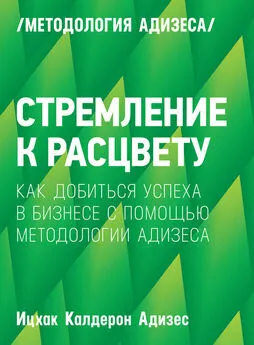
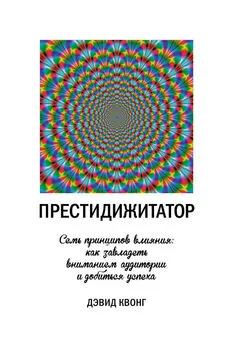
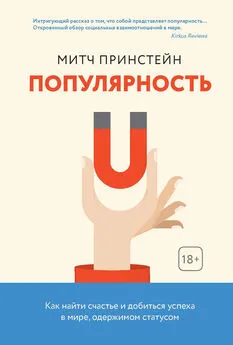
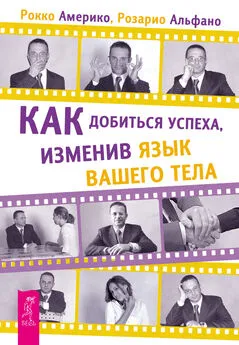
![Жанна Сио-Фашен - Сверходаренный ребенок [Как понять его и помочь добиться успеха] [litres]](/books/1066227/zhanna-sio.webp)
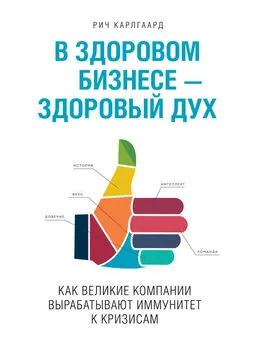
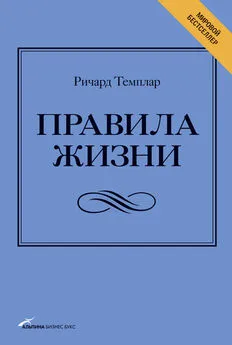
![Брэд Сталберг - Гори, но не сгорай. Как пойти ва-банк, добиться успеха и наслаждаться жизнью без баланса [litres]](/books/1147482/bred-stalberg-gori-no-ne-sgoraj-kak-pojti-va.webp)